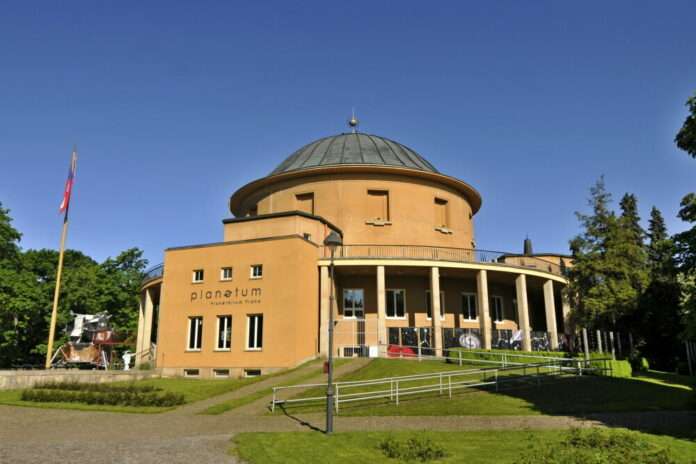Prague Planetarium, one of the world’s largest and most respected planetariums located in the heart of the Czech Republic, has announced Cosm, parent organization of Evans & Sutherland and leading immersive technology, media, and entertainment company, as its official partner for the renovation of its planetarium projection dome. Slated to be Europe’s first LED dome and the most advanced of its kind on a global scale, Prague Planetarium, powered by Cosm Technology, will feature an extended 22-meter, CX System LED dome display with 8K+ resolution and more than 45 million pixels.
With the renovation of the dome at Prague Planetarium, visitors can expect unparalleled viewing experiences at the highest-level resolution, contrast, and brightness that can only be achieved through CX System, Cosm’s end-to-end immersive technology solution. Utilizing Cosm’s CX System, which includes Digistar 7, the world’s most advanced planetarium system, as well as a deep integration of Unreal Engine, Prague Planetarium will have the capability to showcase the most immersive, top-quality astronomy simulations and scientific visualizations in the world. The integration of CX System also empowers Prague Planetarium to develop in-house experiences, such as multi-medium presentations, immersive events, experiential fundraisers, and much more, to engage audiences and stimulate sensory experiences like never before.
“Prague Planetarium is undergoing the largest reconstruction in its 65-year history,” said Jakub Rozehnal, director of Prague Observatory and Planetarium. “The selection of the supplier of the new LED technology was crucial for the entire planetarium modernization. We are very pleased that the year-long tender was won by Cosm.”
Prague Planetarium opened in 1960 and has long been a cornerstone for learning and curiosity, drawing more than 250,000 visitors per year. Today, the theatre paves the way for the next generation of planetariums by implementing Cosm’s CX System, an LED dome and Shared Reality software platform, a solution that enhances the viewing experience with a brightness that is more than 100x that of the brightness in projection domes, which visibly eliminates the cross-reflection typically seen in traditional projection systems.
“We are honored and excited that the capital city of Prague selected Cosm and our LED CX System for the renovation of this iconic planetarium. We have enjoyed working with the Prague team, who are knowledgeable and well informed about the leading-edge LED dome for the planetariums of the future. This team has the technical ability and creative talent to make the most of the CX System and create leveled-up, never-before-seen experiences for their audiences and those around the world to enjoy,” said Kirk Johnson, Chief Operations Officer at Cosm. “We are honored to partner with Prague Planetarium and Skypoint srl, our European partner, to deliver an entirely innovative and compelling guest experience that inspires and entertains visitors for decades to come.”
With a 75-year history building and powering the largest and most prestigious planetariums and science centers worldwide, Cosm and its wholly owned subsidiaries, Evans & Sutherland and Spitz, have developed category-defining technology, an ecosystem of immersive media, and immersive entertainment solutions that seamlessly bridge the virtual and physical worlds, transporting audiences anywhere real or imagined within a physical and social environment. Cosm Technology was announced last year as the immersive 8K+ LED dome solution for the Fort Worth Museum of Science and History’s Jane & John Justin Foundation Omni Theater, which will complement the Prague Planetarium as the first LED-powered science center in the United States.
The reconstruction of the Prague Planetarium is the capstone of the extensive modernization of the observatories and planetarium. In addition to the modernization of the projection system, the 18-month reconstruction will also include the expansion of the exhibition areas and the installation of unique technology allowing the recovery of waste heat from the display. The planetarium will reopen to new visitors in early 2025.






